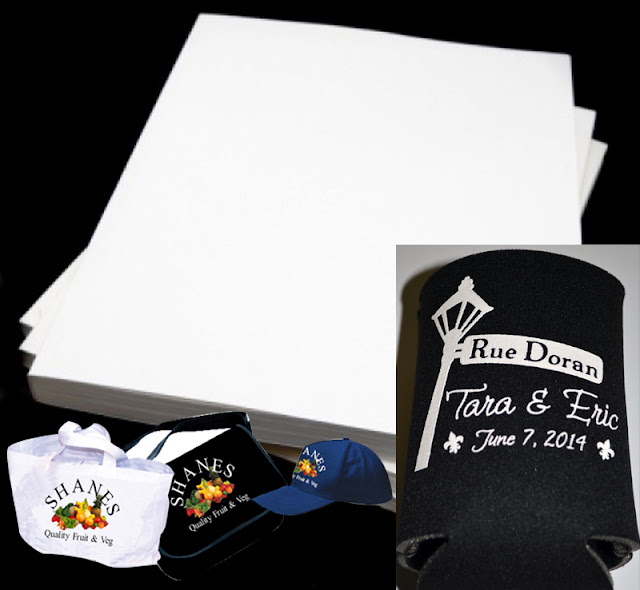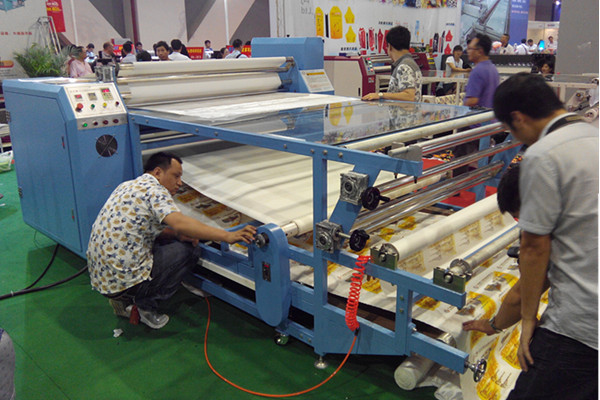The Right “Basis
Weight”
Nearly all sublimation transfer papers for inkjet printing on the market today fit into one of the following weight categories:
Nearly all sublimation transfer papers for inkjet printing on the market today fit into one of the following weight categories:
- around 50 g/m2
- around 70 g/m2
- around 100 g/m2
- around 140 g/m2.
In the case of printing on open substrates, four criteria should be
considered for the correct paper choice: Ink load, pattern difficulty, web
tension control and printing speed.
Criterion 1 Ink
loading
This is the general and dominant rule. The higher the ink loading, the heavier the paper has to be in order to accept the moisture from the ink without any problems. The relationship between ink loading and paper weight results directly from the water absorption by the paper.
This is the general and dominant rule. The higher the ink loading, the heavier the paper has to be in order to accept the moisture from the ink without any problems. The relationship between ink loading and paper weight results directly from the water absorption by the paper.
Criterion 2
Difficult patterns
Difficult patterns demand heavier paper.
What is a “difficult” pattern in this context? One that has:
Difficult patterns demand heavier paper.
What is a “difficult” pattern in this context? One that has:
- an asymmetrical design
- blotches or bands with
little or no ink alternated with blotches or bands with a high ink loading
Difficult patterns pose a challenge for the paper’s dimensional stability
because they create big, local differences in the amount of ink that will be
absorbed. At the borderline between low and high ink loading, the transfer
paper has a tendency to cockle.
Criterion 3
Roll-to-roll or roll-to-sheet
Roll-to-roll operation of the printer allows for a certain amount of tension control. Although the different types and makes of printers vary considerably in this regard, as a general rule roll-to-roll printing results in better process control than roll-to-sheet, in which the paper web is cut off immediately after the printing heads. Additionally, when the printed paper is processed from the roll in a transfer calender, conditions are ideal for the use of a lightweight paper.
Roll-to-roll operation of the printer allows for a certain amount of tension control. Although the different types and makes of printers vary considerably in this regard, as a general rule roll-to-roll printing results in better process control than roll-to-sheet, in which the paper web is cut off immediately after the printing heads. Additionally, when the printed paper is processed from the roll in a transfer calender, conditions are ideal for the use of a lightweight paper.
Criterion 4
Printing speed
The higher the printing speed, the lower the paper weight can be. Cockling causes problems mostly when it happens directly beneath the printing heads. The papers for open substrates are designed to slow the water absorption in the paper structure. From this, a higher printing speed takes the cockling away from the danger zone under the printing heads.
The higher the printing speed, the lower the paper weight can be. Cockling causes problems mostly when it happens directly beneath the printing heads. The papers for open substrates are designed to slow the water absorption in the paper structure. From this, a higher printing speed takes the cockling away from the danger zone under the printing heads.
SU ZHOU FULL COLOR PAPER INDUSTRIAL CO.LTD
XiangCheng District,SuZhou,JIangSu,China
86-025-86628894



No comments:
Post a Comment